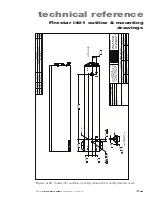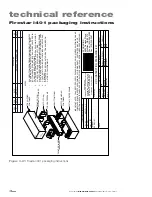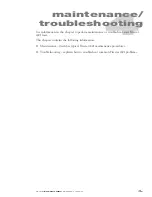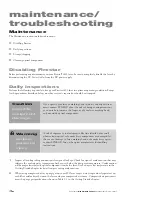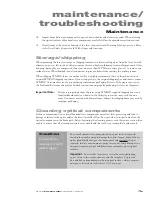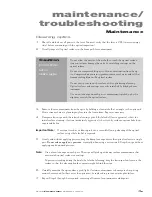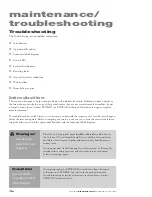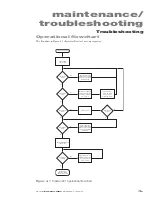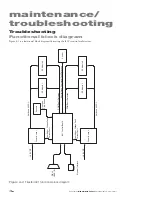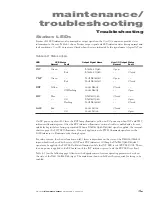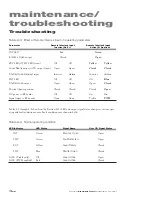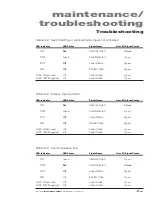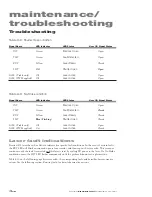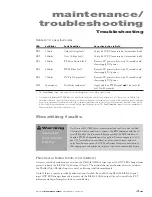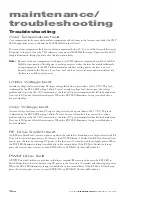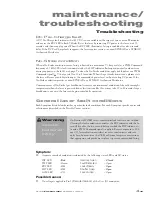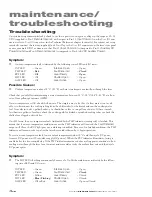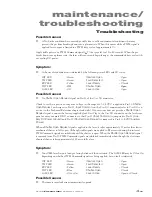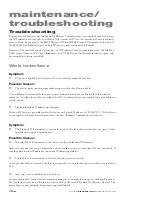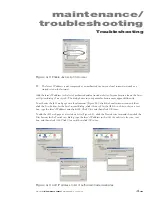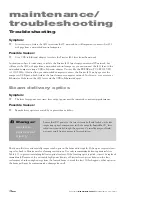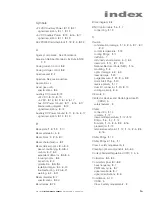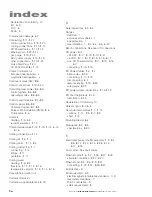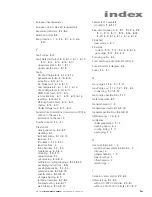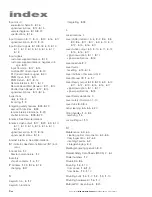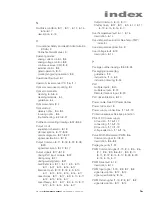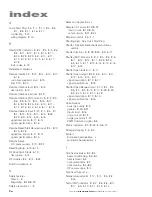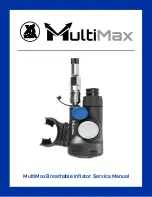
maintenance/
troubleshooting
4
13
Synrad
Firestar i401
operator’s manual
Troubleshooting
Table 4-10
Laser fault codes
LED
# of Blinks
Fault Condition
Corrective Action in Field
RDY
1 blink
Under Voltage fault
1
Verify 48.0 VDC (measured at laser under load)
RDY
2 blinks
Over Voltage fault
1
Verify 48.0 VDC (measured at laser under load)
RDY
3 blinks
RF Drive Switch fault
1
Remove DC power to laser, wait 30 seconds, and
then reapply DC power
RDY
4 blinks
PWM Drive fault
1
Remove DC power to laser, wait 30 seconds, and
then reapply DC power
RDY
5 blinks
DC Pre-Charge fault
1
Remove DC power to laser, wait 30 seconds, and
then reapply DC power
SHT
Continuous
No-Strike condition
2
Apply tickle or PWM signal (<5% duty cycle)
for 30 to 60 seconds
1 The
Laser Ready
output opens (switches to a high impedance state) when a fault occurs.
2 A continuously flashing
SHT
LED indicates a No-Strike condition and the laser is limited to a 5% duty cycle (at 5 kHz). If the
No-Strike condition clears, the laser will recover without cycling power. Common causes of No-Strike condition (gas breakdown)
issues are environmental conditions—like cold overnight temperatures when the laser is off. In situations like this, it may take 30
to 60 seconds for gas breakdown to occur and begin normal daily operation. The
Fault Detected
output closes for a minimum of
50 ms or until the No-Strike condition clears.
Resetting faults
Remote Interlock condition
A remote interlock condition occurs when the
Remote Interlock
input opens (the
INT
LED changes from
green to red and the
Interlock Open
output Closes). The internal shutter mechanism closes (even when
the
Shutter Open Request
input is active) and lasing is halted immediately.
On i401 lasers, a remote interlock condition is not latched. Re-establish the
Remote Interlock
signal
input (
INT
LED changes from red to green and the
Interlock Open
output Opens) to enable the
RDY
indicator and begin lasing after the five-second delay.
Warning
serious
personal
injury
On Firestar i401 OEM lasers, remote interlock faults are not latched.
Clearing the fault condition re-enables the
RDY
indicator and the la-
ser will fire after the five-second delay provided the
SHT
indicator is
lit and a PWM Command signal is applied. Because exposure to 10.6
µm CO
2
laser radiation can inflict severe corneal injuries and seri-
ously burn human tissue, the OEM or System Integrator must ensure
that appropriate safeguards are in place to prevent unintended lasing.

